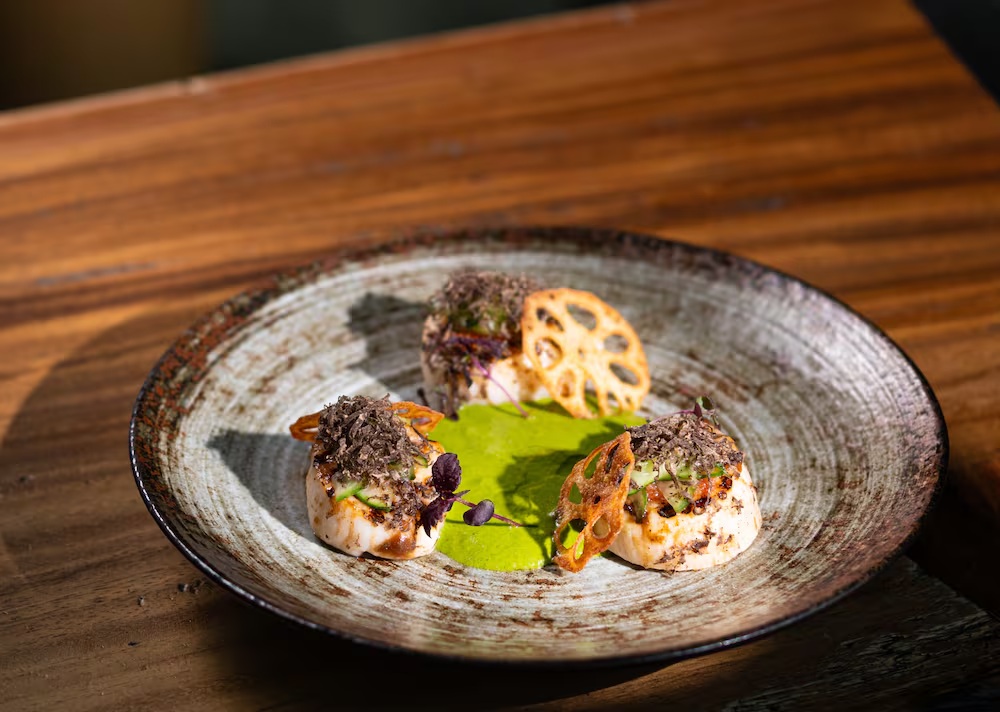
Matt Hanson
ISTANBUL: In the capital city of Georgia, the allure of Turkish coffee has not faded over the centuries of cultural interrelations from Istanbul to Tbilisi, where the traditional Turkish cezve pot is sold aplenty in antique flea markets
They stack up, one on top of another, gleaming with unsullied copper, polished wood, made by the artisan craft workers of the past, perhaps even before the modern borders that divide Turkey and Georgia formed. The many, ancient and multilingual histories of sociocultural interaction between the two nations runs deep in the waters, lands and peoples of their respective and shared regions, especially where the southeastern corner of the Black Sea meets the cities and towns between Batumi and Trabzon. It is audible in the music, as the sonic tapestry of polyphonous harmonies ascends over country fiddles.
But farther inland, in Tbilisi, the largest Georgian metropolis and capital of the Caucasian republic, traces of Turkish culture abound. In their sleekest cafes, alongside the global order of espresso drinks, young baristas are pouring cold water into ribbed, metal pots, stirring the fine ground bean that is the basic ingredient of the Turkish coffee. And served, according to old rituals, with a clear glass of water, it is customary to wait patiently, and watch, to see what the guest reaches for first. If they go for the water, passing over the coffee, and perhaps the Turkish delight, then they are, as prophecies may have foretold, hungry.
Eating well, however, is the least of a traveler’s problems in Georgia, where street bakers dole out massive varieties of bread in large portions, stuffed with cheeses, potatoes and multitudes of other tantalizing tastes, filling and fast, like börek in Turkey, but by the sheer size and grit of it, more like pita in Greece. The basic alimentation of wheat and dairy for the masses is reminiscent of the legacy that the archaic Roman empire may have wrought over its pale since the dawn, or at least morning, of Western civilization. Georgian cuisine, even in its more quotidian incarnations, is as delightfully nourishing as it is warming.
And with their common linkages by way of the Eastern Church and its ties throughout Anatolia and Central Asia, from Turkey’s Byzantine heritage to the early monastic societies of Georgia, the multicultural cezve of pre-modern Roman society looms large, full on every side of the horizon. In fact, various forms of the ubiquitous coffeepot known in Turkish as cezve (pronounced “jezve”) are littered throughout Tbilisi’s most famous flea market, located on the western shores of the Kura River, over the Chughreti Bridge, where the golden dome of the Sameba Cathedral decorates the low-rise, medieval cityscape.
Every last drop to life
A Georgian man sat with his wife and two foreign friends at a vegetarian restaurant in the hip Tbilisi district of Vake. He had to have his espresso before eating. With a comic attitude, he relished in his rule, although the woman who had lived beside him for many years did not hesitate to make fun of him for his culinary quirk. While of Italian inspiration, the drinking of coffee prior to dining, as an appetizing stimulant, may have roots in the Turkish origins of imperial cafe culture, as the influence of the Ottomans, their trade with Arabic societies, essentially spread coffee throughout much of Eurasia.
His wife was from Batumi. She expressed her love for the Black Sea coast, for Turkey and Istanbul, where her daughter had many friends, and intended to enroll in university. It was plain in her eyes, a characteristic glint followed by a soft smile, that she was infatuated with the worldly verve of the Turkish lifestyle, its liberal youth, and their enthusiastic welcome to peers from neighboring countries who, together, with them, live under the same umbrella of historic, intercultural relations. While the men of Georgia may have leaned toward a more masculine, Russian alignment in their ancestral attire, women clung to the femininities of Turkish fashions.
Inside the permanent galleries of Georgia’s National Museum, a vast building on the broad thoroughfare promenade of Rustaveli Avenue, one of Tbilisi’s main arteries, there are vivid examples of historical clothing on display. Among them are dresses dating from the 1920s and 30s, such as that of an Abkhaz woman. Made with delicate weaves of silk, velvet, and golden thread, it could very well have been in the closet of an Istanbul socialite, only one or two centuries prior, as the Ottoman capital was then swept by an unprecedented velocity of cultural Westernization, leaving outlying peoples under its sway lingering in past milieus.
The garments and jewelry of the Abkhaz woman, apparently from the historical region of Samurzakano, might be found in an antique shop in Çukurcuma, the gilded embroidery, and paisley shapes emboldening the silver necklaces and white lace of a woman who must have enjoyed certain prestige in the bucolic environs of her native ecology. Oftentimes the dresses on display at national and folk museums are heirloom bridal gowns, couched in local tradition, yet their styles mingling with what was hot in the imperial centers of the day. It seems that there was a strong industry of Ottoman textiles spanning the fringes of the empire, including Tbilisi.
Courtesy: Dailysabah
The post Istanbul to Tbilisi: Turkish coffee in Georgia appeared first on The Frontier Post.








